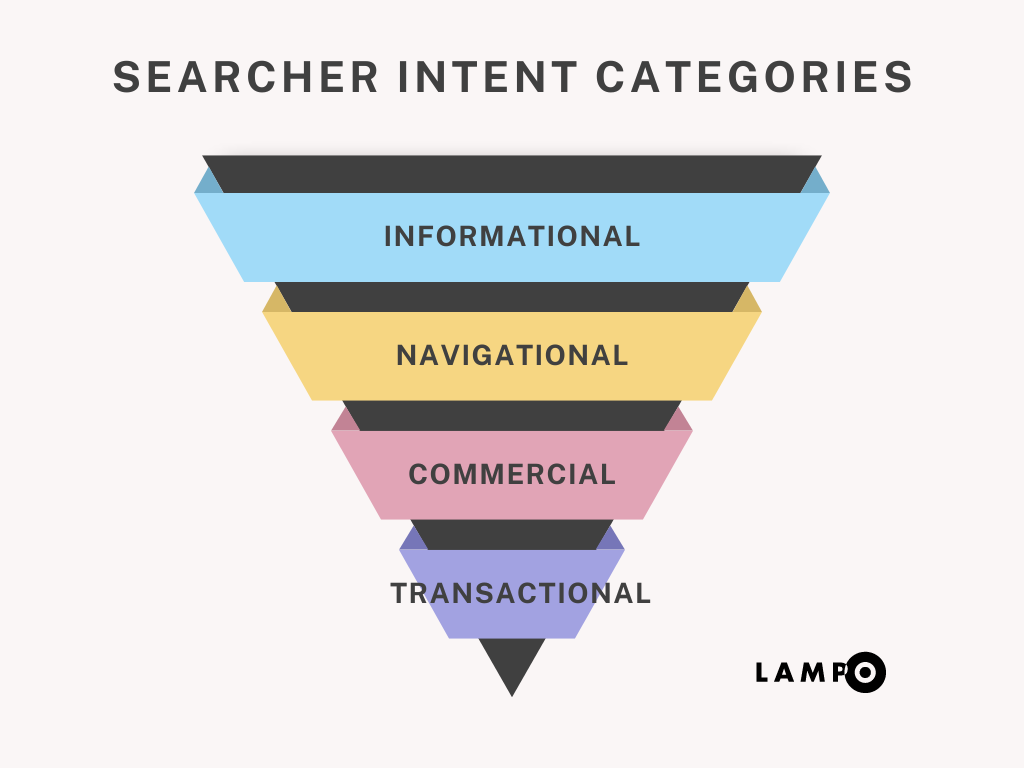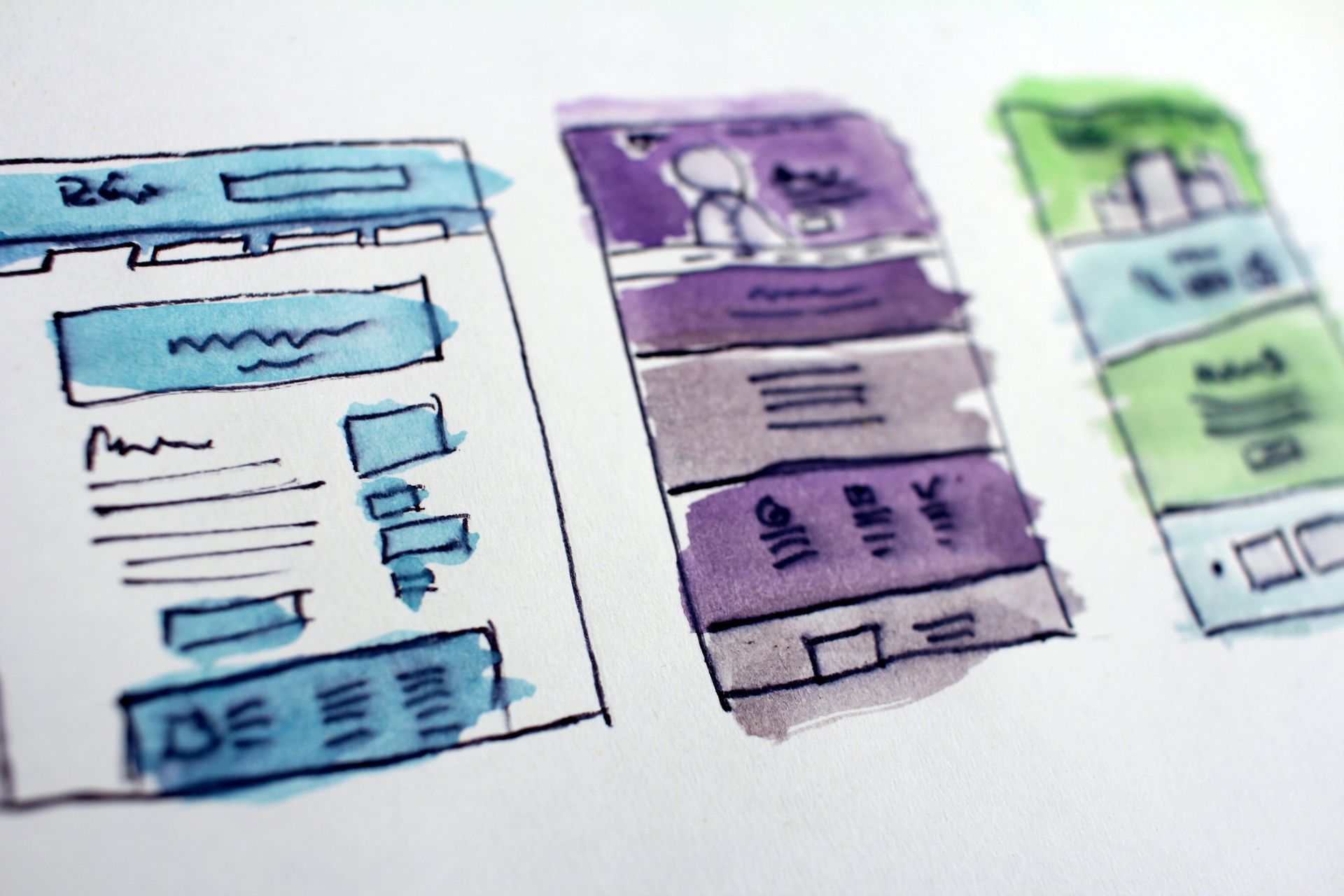Search Intent in SEO:
Everything You Need to Know
The ability to understand a person's search intent (aka user intent) is key in crafting SEO strategies that not only drive traffic but also convert those visitors into customers. After years of writing content that is geared towards connecting to our audience, we’ve learned a few things. In this comprehensive guide we’ll draw upon our hits and misses to cover everything you need to know about search intent, its significance and how you can optimize your content to meet the evolving needs of your audience.
What Is Search Intent?
Search intent simply refers to the purpose behind a user's query on any given search engine. It's the 'why' that drives a search, indicating whether someone seeks information, a specific website or intends to make a purchase (just to name a few).
Why Is Search Intent So Important in SEO?
Since Google is hands down the largest search engine, it’s best to answer this question as it relates to searches made there. Google’s number one goal is to provide the best result(s) possible for each and every search query. Or in other words, to provide the most relevant search results. Therefore, in order to rank at the top, you’ll need to create the most relevant content for a particular query and to do this you’ll need to understand the search intent behind that query.
Impact on Rankings and Visibility
Understanding and aligning your content with search intent can significantly influence your website's visibility in search engine results pages (SERPs), as search engines prioritize content that best satisfies user intent. However, what you think is relevant and what Google thinks is relevant, isn’t always the same.
For example, say you own a pharmacy and you sell assorted cold medicines through your e-commerce website. Naturally, you would like to target those assorted cold medicine pages for the keyword “best cold medicine”. However, it would unfortunately be a waste of your time to try this. If you actually search that keyword on Google, you’ll see that all of the results are informational pages and not transactional ones, so neither yours nor anyone else’s e-commerce pages are going to rank for that query. (I’ll address why all the results are informational in a moment.)
Don't let this mistake happen to you: always type whatever keyword you want to rank for in Google first before you write your content around it. Look over the results and pay close attention. If Google is only rewarding informational pages (like the example above) then you’ll also need an informational page, or if all the results are blog posts then you’ll also need a blog post, etc.
The Four Types of Search Intent
If you were to look at all of the various keyword queries and try to determine the user intent behind them, you would find that you could classify each and every one of them into 1 of 4 categories. These categories are informational, navigational, commercial and transactional.
Informational
A query where a person is looking for general knowledge about something. Typically, searches like these are made by someone who is in the research phase and is not ready yet to make a purchase. Going back to our cold medicine example from earlier, this is the reason Google has all informational results- they know people want to first gather information and maybe they’ll purchase something later on. Pretty smart…
Often informational search queries are keywords paired with broad modifiers such as:
who best
what ideas
how tips
where examples
why help
Example: “Best cold medicine”
Navigational
Navigational queries are also referred to as “website queries”. As the name implies, with these queries a person is looking for a specific website to visit. They know what they’re looking for but need help to find it.
Navigational search queries are easy to spot because they will always be paired with a specific brand name, product name or a specific service name.
Example: “Instagram login”
Commercial
Commercial intent searches bridge the gap between informational intent and transactional intent. With these queries, users are considering an action. They are getting closer and closer to that action but they want more details in order to feel certain they are making the best decision.
Commercial intent queries often involve comparisons. These search queries could use modifiers like:
or
pricing
review
vs.
alternatives
Example: “Microsoft Office or Google Docs”
Transactional
Transactional intent queries signal a readiness that someone is ready to complete an action. We often think about this action in terms of a purchase but some other possibilities could be to make a download, sign up for a newsletter or even to visit a place such as a museum or a park.
Often you will see words such as:
buy
order
coupon
promo code
cheap
price
Example: “Cheap flights Barcelona”

Did you ever hear anyone mention marketing funnels or sales funnels? These 4 types of searcher intent closely match that same principle. At the top of the funnel, you have informational queries. These make up the majority of search queries but they also correlate to a very low number of conversions (purchases, downloads, sign ups, etc). And as you work your way down the funnel, the number of search queries become fewer and fewer but the number of conversions increases.
A question that comes up regularly is “why not be efficient and just target transactional queries?” It does have a certain logic to it. However, we don’t advise doing that, for a couple of reasons.
- You are greatly limiting your reach. By targeting all areas of searcher intent, you succeed in increasing your brand awareness and building up some legitimacy and trust. And wouldn’t that benefit you down the road when that person is actually ready to act?
- Having someone on your site also gives you another advantage. By internal linking to other content that targets the other categories of search intent, you have the possibility to substantially speed up that person’s buying journey.
How to Optimize for Search Intent
In order to effectively satisfy searcher intent and rank well in Google, you’ll need to understand more than just the 4 types of user intent and which modifiers to use with your keywords. You will also need to ensure that you provide the right information in the right format.
It cannot be stated enough the importance of examining the search results where you want to be and then doing as everyone else there is doing. Of course your aim should be to have the best and most helpful original content. But what I mean is, you want to serve it up in the same way as everyone else.
- Whether it’s a blog post, e-commerce page or anything else, if that’s what the other results are then that’s what you should be too.
- If the other formats are lists such as a Top 10s or “How-To’s” or “Step by steps”, etc then that is the format you should incorporate also.
The goal of search intent is to reach your target audience and in order to do that, you’ll need to rank well. It’s not fair but your target audience will not come looking for you on page 5 of the search results. It won’t happen. But by looking at the top 10 search results, Google will show you exactly what the winning angle is in order for you to deliver on search intent.
Identify Relevant Subtopics
Another part of satisfying user intent is to thoroughly cover a topic. In order to do this, you’ll want to explore the various subtopics related to your main content theme. Writing about subtopics can fill gaps in your content and help you to cater to a broader range of search intents. Need help uncovering subtopics? There are many paid platforms, such as ahrefs or Semrush, with tools to help you uncover them.
However, there are a couple of free options that we highly recommend. Simply plug your search query into Google and then take note of the “People Also Ask” (top) and “Related Searches” (bottom) sections. You will find tons of information and each time you click on one of these it leads to even more subtopics being generated. Alternatively, you could ask a free tool like chatgtp for suggestions.
Effectively integrating subtopics enhances the comprehensiveness of your content, helps you to address various user queries and improves your content's overall SEO performance.
Create and tailor content that matches the identified search intent of your target audience at the various stages of their journey. It’s that simple. Do this and you’ll ensure that your content meets their needs and will increase the likelihood of engagement now and an action later on.
Going Beyond User Intent
Finding the perfect keywords and mastering user intent is necessary to help your audience find your site and give you the chance to convey what it is you would like for them to know, see or learn about. This is where it becomes important to pay attention to user satisfaction and a positive use experience also. It would be a real shame if you succeeded in getting the right visitors to your site only to have them quickly leave due to a bad user experience.
My advice is to make your content look appealing. By this I mean, do things like:
- Choose a softer black for your font instead of #000000
- Pick a font size that is easy on the eyes and not too small
- Use margins instead of wall to wall text
- Arrange your content with the proper heading tag structure so it can be understood by someone skimming over it: break up content into paragraphs and lists and use short, descriptive headings
- Don’t use excessive pop-ups (if any at all)
What are some things that you would put on your list? Chances are that if something appeals to you then it probably appeals to a lot of other people too.
Tailoring content to meet user intent and providing a positive user experience will result in reduced bounce rates and encourages deeper engagement with your site.
And content optimized for search intent is more likely to rank higher in SERPs, attract more traffic and achieve better conversion rates, as it resonates more effectively with the target audience's needs and desires.
Need help drafting a search intent strategy that puts you right in front of your target audience?
Click the button below and let’s start a conversation!
Thanks for reading!





